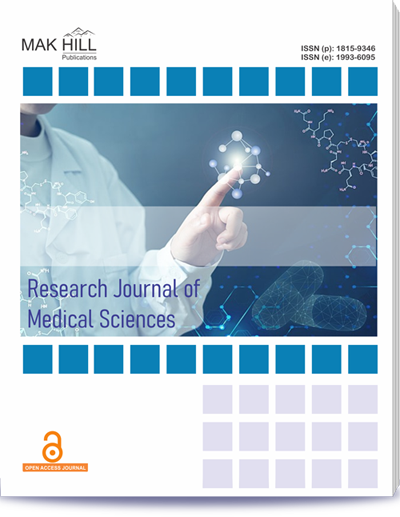
Research Journal of Medical Sciences
ISSN: Online 1993-6095ISSN: Print 1815-9346
Abstract
Cancer of unknown primary (CUP) presents a diagnostic challenge due to the absence of an identifiable primary tumor site. PET‐CT has emerged as a significant imaging modality in the search for primary tumors in such cases. This study aims to evaluate the effectiveness of PET‐CT in detecting primary tumors in patients with CUP. This retrospective observational study included 30 patients diagnosed with CUP who underwent PET‐CT imaging. Patients were selected based on the presence of metastatic cancer with no identifiable primary site after standard workup. PET‐CT imaging followed a standardized protocol and follow‐up data were analyzed to assess the final diagnosis of the primary site. Image analysis was conducted by experienced radiologists and statistical methods were employed to determine the detection rate and other relevant metrics. PET‐CT successfully identified the primary tumor in 24 out of 30 cases, resulting in a detection rate of 80%. The primary tumors were most frequently found in the lungs (16.7%) and pancreas (12.5%). Among the 6 cases where PET‐CT did not initially detect the primary site, follow‐up investigations revealed the primary tumor in 2 cases (33.3%). However, 4 cases (66.7%) remained undetected despite extended follow‐up. Characteristics of undetected cases included older age and persistent CUP. PET‐CT is an effective tool for detecting primary tumors in patients with CUP, with an 80% detection rate. It effectively identifies tumors in a variety of organs, yet 20% of cases remain undetected initially and 66.7% of follow‐up cases continued to show no primary site. This underscores the need for complementary diagnostic methods and extended follow‐up to improve detection rates and patient management. Further research is encouraged to enhance diagnostic strategies for CUP.
How to cite this article:
N.S. Rajashree, Vinod and Assvath . Evaluation of the Role of PET‐CT in Identifying Primary Tumors in Patients with Cancer of Unknown Primary: A Retrospective Analysis of 30 Cases.
DOI: https://doi.org/10.36478/makrjms.2025.3.9.12
URL: https://www.makhillpublications.co/view-article/1815-9346/makrjms.2025.3.9.12